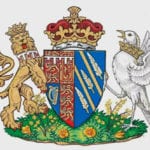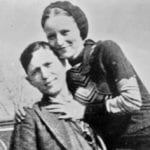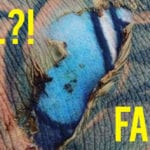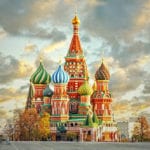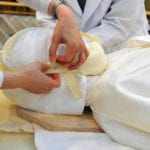 Technology
Technology  Technology
Technology  Humans
Humans 10 Everyday Human Behaviors That Are Actually Survival Instincts
 Animals
Animals 10 Animals That Humiliated and Harmed Historical Leaders
 History
History 10 Most Influential Protests in Modern History
 Creepy
Creepy 10 More Representations of Death from Myth, Legend, and Folktale
 Technology
Technology 10 Scientific Breakthroughs of 2025 That’ll Change Everything
 Our World
Our World 10 Ways Icelandic Culture Makes Other Countries Look Boring
 Misconceptions
Misconceptions 10 Common Misconceptions About the Victorian Era
 Mysteries
Mysteries 10 Strange Unexplained Mysteries of 2025
 Miscellaneous
Miscellaneous 10 of History’s Most Bell-Ringing Finishing Moves
 Technology
Technology Top 10 Everyday Tech Buzzwords That Hide a Darker Past
 Humans
Humans 10 Everyday Human Behaviors That Are Actually Survival Instincts
 Animals
Animals 10 Animals That Humiliated and Harmed Historical Leaders
Who's Behind Listverse?

Jamie Frater
Head Editor
Jamie founded Listverse due to an insatiable desire to share fascinating, obscure, and bizarre facts. He has been a guest speaker on numerous national radio and television stations and is a five time published author.
More About Us History
History 10 Most Influential Protests in Modern History
 Creepy
Creepy 10 More Representations of Death from Myth, Legend, and Folktale
 Technology
Technology 10 Scientific Breakthroughs of 2025 That’ll Change Everything
 Our World
Our World 10 Ways Icelandic Culture Makes Other Countries Look Boring
 Misconceptions
Misconceptions 10 Common Misconceptions About the Victorian Era
 Mysteries
Mysteries 10 Strange Unexplained Mysteries of 2025
 Miscellaneous
Miscellaneous 10 of History’s Most Bell-Ringing Finishing Moves
10 Little-Known Facts From History That Are Truly Outrageous
Although history is a rich, complex subject, schools can make it a bit boring by leaving out the juicy bits. Typically, this is either because they are too raunchy or because they don’t conform to the currently desired social narrative. History class would be significantly more interesting if it covered these ten entries.
10 Groundhog Day Initially Involved Cooking The Animals

February 2 is Groundhog Day in the United States. On that day, if a groundhog emerges from its burrow, sees its shadow, and scurries back to its den, then residents claim they can expect six more weeks of winter. If not, then spring will come early. Regardless of the outcome, the festivities have become quite popular, especially thanks to the eponymous 1993 movie starring Bill Murray.
Although the holiday is celebrated in many locations throughout the US, the biggest festival takes place in Punxsutawney, Pennsylvania, home of the legendary Punxsutawney Phil. This is also the place where the tradition originated back in the 1880s. However, the initial celebration, called “the Punxsutawney Groundhog Club,” involved large groups of visitors prowling the hillsides, hunting the groundhogs for dinner.[1]
The club was the brainchild of a local newspaper editor named Clymer Freas. Back then, the train from Pittsburgh passed through Punxsutawney to reach a nearby coal plant, and locals wanted a way to make people stop instead of just passing through. Freas began using flashy descriptions for the groundhog hunts, hoping to draw larger crowds. The tradition morphed into an over-the-top weather forecast soon enough, and in 1886, Punxsutawney Phil became the “Seer of Seers, Sage of Sages, Prognosticator of Prognosticators, and Weather Prophet Extraordinary.”
9 Johnny Appleseed Was Motivated By Money And Religion
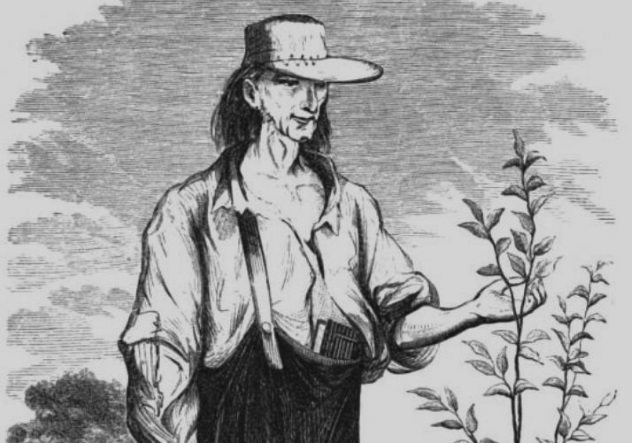
The legend of Johnny Appleseed is pervasive in American culture. Most people have the same image of him, walking around with a bag full of seeds, planting apple trees everywhere he went. While this description is somewhat accurate, it misses out on the real motives behind Johnny’s actions.
Back in the late 18th century, the Northwest Territory still had massive chunks of uninhabited land, which were being bought by private companies in anticipation of settlers. In 1792, the Ohio Company of Associates began offering acres of land in the wilderness as incentive for new permanent homesteads. In return, they asked would-be settlers to plant 50 apple trees and 20 peach trees within a few years as a show of commitment.[2]
Appleseed, real name John Chapman, realized he could stay just ahead of the incoming frontiersmen, planting the orchards himself and selling the land at a profit. Afterward, he would just move to another piece of undeveloped land and repeat the process. Furthermore, Chapman was a devout member of the New Church based on the teachings of Emanuel Swedenborg and also used the opportunity to spread his gospel.
Strangest of all, it’s unlikely that Chapman’s apples were used as food. Given how sour they were and the popularity of hard cider, most of them would have been used for alcohol. Only one Appleseed tree allegedly still exists, on a farm in Nova, Ohio. All the rest were cut down by the FBI during Prohibition due to their ties to alcohol.
8 How To Spot A Virgin
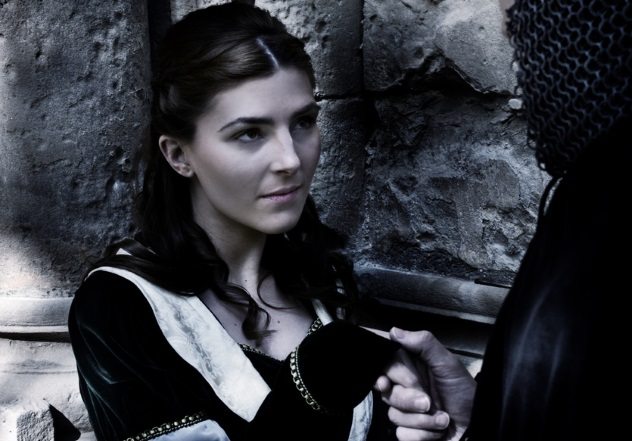
Throughout history, a woman’s body was considered much more the concern of her parents, her betrothed, and her church than of her own. A young woman’s virginity was seen as a prized commodity and would often increase the value of the bride. Understandably, any potential suitors would want assurances of the girl’s purity if they were to pay a premium for it. That’s where the virginity tests came in.
The standard test involved checking the sheets for blood after the marriage was consummated. However, there were ways of faking it, typically involving animal blood. Furthermore, as we know today, there are a lot of medical reasons why first-time intercourse doesn’t always result in bleeding.
Examination of a woman’s urine was also a popular method described by physicians from ancient to medieval times. Pliny the Elder gave a recipe for a potion which the woman was supposed to drink after fasting for a few days. If she could refrain from peeing, then the girl was still a virgin. Albertus Magnus wrote of a similar method.
Fumigation tests were all the rage during the Middle Ages. While they varied in execution, they were based on the idea that, after sex, a woman’s body became an open passage that could carry smells and odors from one end to the other. Italian physician Niccolo Falcucci suggested that a virgin covering her bottom half with cloth and fumigating it with coal would not be able to detect the odor.[3] Alternatively, fumigating a virgin with dock flowers would make her turn pale. Others believed that fumigating a woman’s lower area with various ingredients would make her breath smell the same way.
7 How To Catch A Unicorn
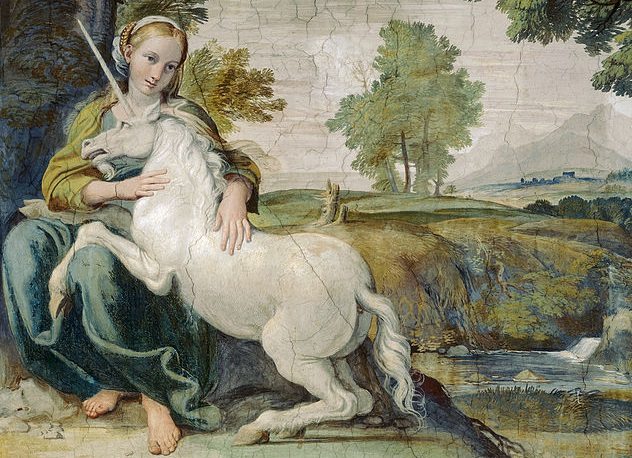
Unicorns have been around for a long time. They were first mentioned by the ancient Greeks, then referenced several times in the Bible, and have become a staple of many cultures ever since.
Despite the somewhat gentle nature we ascribe to the mythological creature, ancient historians always presented it as one of the fiercest animals in nature. Pliny the Elder even decreed that it was impossible to catch one alive. Seventh-century scholar Isidore of Seville concurred with Pliny . . . mostly. He knew the one weakness of the unicorn and went on to describe the technique needed in order to capture such a creature.
The trick was to use a virgin woman. If she were to stand in front of the unicorn and bare her breasts, the animal would become very docile. It would then proceed to rest its head on the woman’s lap and suckle from her breast until it fell gently to sleep.[4] That was when the hunters could pounce and slay the beast.
6 The Olympic Torch Prank
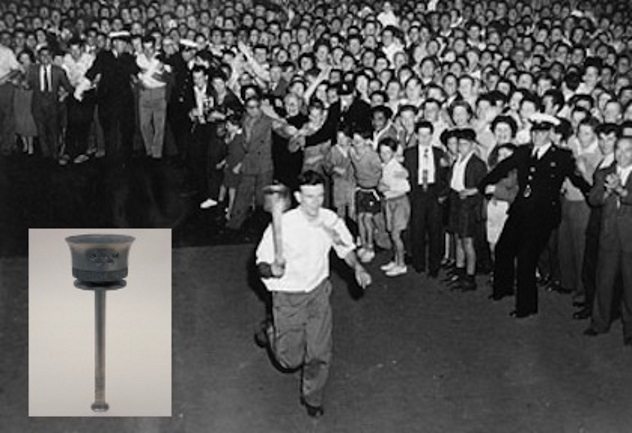
The Olympics have a lot of proud traditions and symbols that trace their origins to the ancient games, but the torch relay is not one of them. In fact, this practice comes to us courtesy of the Nazi propaganda machine at the 1936 Berlin Games. It was the idea of Olympics organizer Carl Diem and was brought to its fullest potential by Joseph Goebbels.
Understandably, some people weren’t happy with how venerated this tradition became in subsequent years, given its ignoble origins. During the 1956 Summer Olympics in Melbourne, a group of Australian students protested the torch relay with a prank.
In Sydney, 30,000 people lined the streets, eagerly awaiting cross-country champion Harry Dillon to arrive carrying the Olympic flame. The plan was for him to give the torch to Sydney mayor Pat Hills, who would give a speech and pass it on to another runner. The historic moment finally arrived, and a young man, curiously dressed in a shirt and tie, flanked by a police escort, made his way to the steps of Sydney Town Hall and handed the flaming torch over to the mayor.
Hills started talking but soon realized something was wrong with the torch. It was actually a painted chair leg with an empty pudding can glued to the top. Inside was burning a pair of underwear soaked in kerosene.[5] The runner, actually a university student named Barry Larkin, had disappeared into the crowd.
5 Franklin Roosevelt: The Failed Bartender
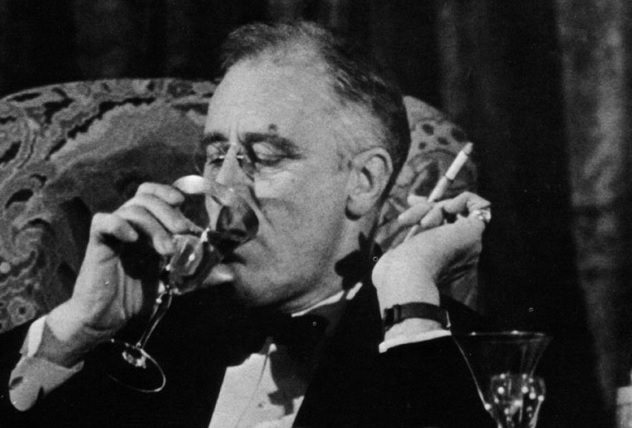
Among other things, Franklin Delano Roosevelt is remembered for repealing Prohibition and making alcohol once again legal in the United States. There is a simple reason for this: The president enjoyed a good cocktail.
There have been plenty of American presidents who liked to drink. Ulysses S. Grant probably had more drunk days in office than sober ones. But Roosevelt took his passion a step further and became the mixologist-in-chief. He passed the time at parties by making cocktails for other partygoers. The only problem was that, according to his colleagues, he just wasn’t very good.
Roosevelt’s go-to drink was the Plymouth martini, which he often liked to spice up by using different combinations of garnishes. He even created his own concoction called the “Haitian Libation.”[6] It consisted of orange juice mixed with dark rum, an egg white, and a dash of brown sugar, served on the rocks. Allegedly, it was meant to help female guests get a bit frisky, but even FDR’s own son, James Roosevelt, called it a “deplorable invention.”
4 Benjamin Franklin’s Love For Older Women
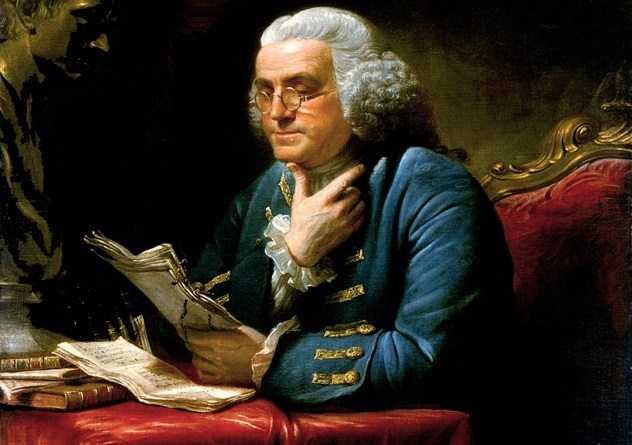
When he wasn’t busy laying down the foundations of the United States, Benjamin Franklin did a lot of outrageous things. On one occasion in 1745, Franklin wrote a letter to a young, unidentified friend, advising him to get married. Although Franklin was strongly in favor of marriage, he recommended that, at the very least, his young friend should get an older mistress. He then proceeded to list off eight candid reasons why older women are superior to their younger counterparts.[7]
Most of the reasons are sensible. According to Franklin, older women are more experienced, more discreet, make for better conversation, and decrease the risk of children. They are also more grateful and get better at day-to-day chores as they age: “They supply the diminution of beauty by an augmentation of utility.”
Most notable is the physical reason why Franklin believed mature women are superior. While their faces wrinkle and their neck and breasts grow “lank,” their lower parts remain “as plump as ever.” Franklin believed that, below a girdle, it was impossible to tell a young woman apart from an older one, or as he memorably put it, “In the dark all cats are grey.”
The letter was subsequently deemed too licentious and wasn’t published with the rest of Franklin’s papers in the 19th century. However, it was later cited in the mid–20th century and helped overturn the Comstock laws, which had made it illegal to mail pornography or other lewd, sex-related material. One judge pointed out that under that legislation, Ben Franklin would have been arrested on federal obscenity charges.
3 The Original Liberty Bell Was Melted And Recast Immediately
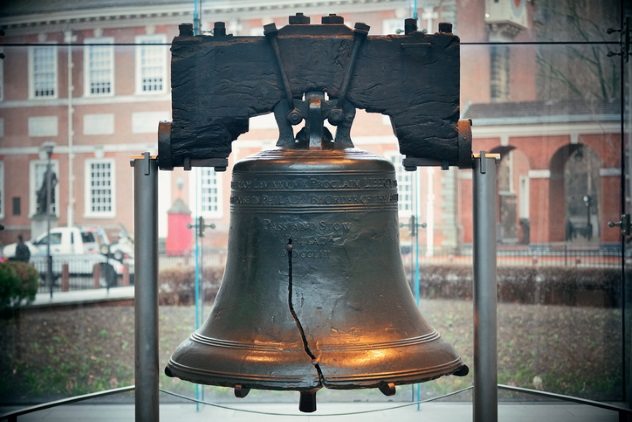
There are few symbols more powerful in US culture than the Liberty Bell. Originally housed in the steeple of the Pennsylvania State House (now known as Independence Hall), it allegedly rang on July 4, 1776, after the Continental Congress voted on independence. Most modern experts contend this is simply a historical myth born from a short story by George Lippard written in 1847, decades after the fact. If the bell rang at all, it would have happened on July 8, during the reading of the Declaration of Independence. However, some historians claim the Liberty Bell wasn’t used then, either, because the steeple was under repair at that time.[8]
As with many historical symbols, the Liberty Bell gained its fame long after it came into existence. In fact, the original bell, which was ordered from England in 1752, gained its infamous crack during a test strike and was promptly melted down and recast. The process was repeated two more times until the statesmen were finally satisfied with the finished product. The current bell gained its crack sometime during the 1800s. Accounts vary as to when and why.
The symbolism came much later, when the image of the bell began to be used by anti-slavery publications. This is also when it became known as the Liberty Bell, having simply been referred to as the State House Bell beforehand.
2 Andrew Jackson Hated Paper Money
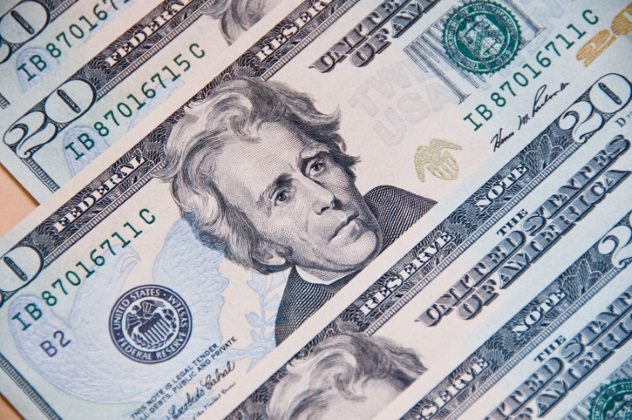
Andrew Jackson, seventh president of the United States, is known today for his service during the Revolutionary War, his penchant for duels and for being involved in America’s dirtiest election. Primarily, though, he is known for being the guy on the $20 bill. This is in spite of the fact that Jackson campaigned against paper currency for most of his presidential career.
During Jackson’s reelection campaign in 1832, a hot-button issue was the Bank War, a political struggle to recharter the Second Bank of the United States. Jackson and his party opposed this move, as they believed it would grant exclusive powers to corporations and take them away from the common man.
In general, Jackson hated paper currency because he considered it too insecure and prone to sudden fluctuations. He preferred “hard money,” such as gold or silver, due to its intrinsic value. Jackson continued to rally against paper currency until the end of his political career. Even in his farewell address, the ex-president warned people of the “mischiefs and dangers” of paper money and called for immediate reform.[9]
1 JFK Partied With Bing Crosby
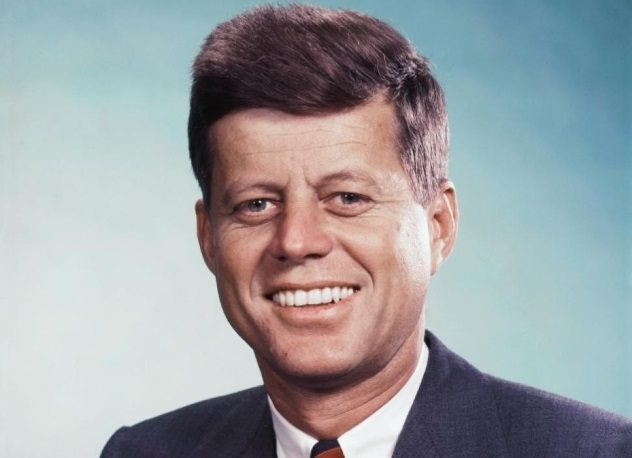
At this point, to say that John F. Kennedy was a womanizer is like saying the sky is blue. His extramarital exploits have been well-documented, yet it seems that there is always room for new revelations. Just a few years ago, former White House intern Mimi Alford came out with a tell-all book describing her love affair with JFK. She talked about the encounters the two shared in the White House pool, aboard his yacht, even in Jackie Kennedy’s own powder-blue bedroom. And yet it seems that JFK liked to let loose the most at Hollywood parties thrown by Bing Crosby. During one Crosby bash, Kennedy convinced Alford to take poppers in order to enhance the sex, although he didn’t partake.
On another occasion, JFK was attending one of Crosby’s parties with a few White House friends. At one point, everyone was naked in the pool. The president was chatting up stewardesses while his aide and close friend David Powers was having sex at the other end of the pool.[10] Hours later, Powers played a prank on Crosby by grabbing as many of his suits as possible and jumping in the pool with them, to the amusement of the president and annoyance of the crooner.
For more things your teacher didn’t tell you, check out 10 Dirty History Facts That Got Skipped In Class and 10 Unexpected Firsts Left Out Of The History Books.



